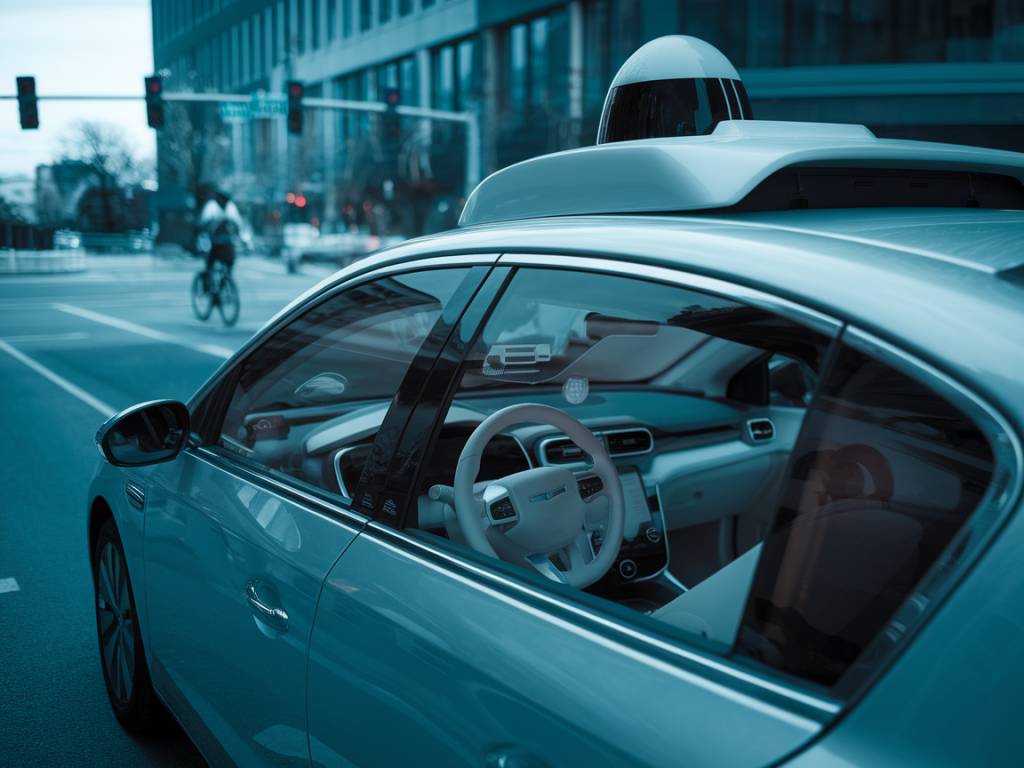the evolution of car safety standards with autonomous driving technology

the evolution of car safety standards with autonomous driving technology
Car safety standards have come a long way since the invention of the automobile. From the introduction of seat belts to advanced airbag systems, the relentless pursuit of safety has always been a focal point for car manufacturers and regulatory bodies alike. With the rapid advancement of autonomous driving technology, the need for updated and stringent safety standards has never been more critical. This article delves into the evolution of car safety standards, highlighting the impact of autonomous driving technology and the future of automotive safety.
Early Years of Car Safety
The early automobiles of the 20th century were rudimentary machines compared to today’s sophisticated vehicles. Safety features were virtually non-existent, and driving was a perilous activity. The first significant step towards car safety came with the introduction of the seat belt in the 1950s. Pioneers like Volvo made seat belts standard in their vehicles, dramatically improving driver and passenger safety.
Other essential safety features that emerged during this period include:
- Collapsible steering columns
- Padded dashboards
- Safety glass
Despite these innovations, car accidents remained a leading cause of fatalities. It was evident that more rigorous standards were necessary, leading to the establishment of governmental safety regulations.
Regulatory Milestones
Governments worldwide began to implement regulations aimed at improving vehicle safety in the 1960s and 1970s. In the United States, the National Traffic and Motor Vehicle Safety Act of 1966 marked a significant turning point, leading to the creation of the National Highway Traffic Safety Administration (NHTSA). This agency was tasked with setting and enforcing safety standards, conducting research, and educating the public on road safety.
Key regulatory milestones include:
- Mandatory seat belts and airbags
- Crash test ratings
- Electronic Stability Control (ESC)
- LATCH (Lower Anchors and Tethers for Children)
These regulations have significantly reduced traffic fatalities and injuries, making modern cars some of the safest in history. However, the introduction of autonomous driving technology has brought new challenges and opportunities in the realm of vehicle safety.
The Advent of Autonomous Driving Technology
Autonomous driving technology promises to revolutionize the automotive industry by reducing human error, which is a leading cause of accidents. This technology encompasses a range of advanced systems, including but not limited to:
- Advanced Driver Assistance Systems (ADAS)
- Lane Keeping Assist
- Adaptive Cruise Control
- Self-parking capabilities
- Fully autonomous vehicles
While the potential benefits of autonomous driving are enormous, they also pose new challenges for car safety standards. Traditional safety measures like seat belts and airbags are no longer sufficient. Instead, new standards must address the complexities introduced by automated systems.
New Safety Standards for Autonomous Vehicles
The transition to autonomous vehicles necessitates a comprehensive reevaluation of existing safety standards. Key areas of focus include:
- Software Reliability: Ensuring that the software governing autonomous systems is robust and free from vulnerabilities is paramount. Regulatory bodies are working on guidelines to standardize software testing and validation processes.
- Data Security: Autonomous vehicles rely heavily on data for their operation. Protecting this data from cyberattacks is crucial for maintaining the safety and integrity of the vehicle.
- Redundancy Systems: Autonomous vehicles must have redundant systems in place to handle failures. This includes backup power supplies and secondary systems to take control in case of a primary system failure.
- Human-Machine Interface: As we move towards fully autonomous vehicles, the interaction between human drivers and the vehicle’s automated systems becomes a critical aspect of safety. Standards must be developed to ensure seamless and intuitive interfaces.
Various international bodies, including the NHTSA in the United States and the European New Car Assessment Programme (Euro NCAP), are actively working on developing these new safety standards.
Public Perception and Education
One of the most significant barriers to the widespread adoption of autonomous vehicles is public perception. Many people are understandably cautious about relinquishing control to a machine. Therefore, educating the public on the safety benefits and operational mechanisms of autonomous vehicles is essential.
Public awareness campaigns and educational programs can help dispel myths and provide accurate information on the benefits and safety of autonomous driving technology. These initiatives can significantly enhance public trust and accelerate the adoption of autonomous vehicles.
The Role of Manufacturers
Automobile manufacturers play a crucial role in the evolution of car safety standards, particularly in the context of autonomous driving. They are at the forefront of innovation, developing and testing new safety features that will eventually become standard in all vehicles.
Manufacturers are also responsible for conducting rigorous testing and validation of their autonomous systems. This includes real-world testing and simulations to ensure the reliability and safety of these systems in various conditions. Collaboration between manufacturers, regulatory bodies, and technology companies is essential for developing robust safety standards that keep pace with technological advancements.
International Collaboration
Autonomous driving technology transcends national borders, making international collaboration vital for developing comprehensive safety standards. Organizations like the United Nations Economic Commission for Europe (UNECE) are working on global regulatory frameworks to ensure the safe deployment of autonomous vehicles worldwide.
This collaborative effort aims to harmonize safety standards across countries, facilitating the global adoption of autonomous driving technology. It also allows for the sharing of best practices and knowledge, accelerating the development of safe and reliable autonomous systems.
The Future of Car Safety Standards
As technology continues to evolve, so too will car safety standards. The future of automotive safety will likely focus on the following areas:
- Enhanced Connectivity: Vehicles will become increasingly connected to each other and to infrastructure, enabling real-time data exchange for improved safety and efficiency.
- Artificial Intelligence (AI): AI will play a significant role in enhancing the capabilities of autonomous systems, allowing for more accurate decision-making and improved safety.
- Continuous Learning: Autonomous systems will continuously learn and adapt based on real-world data, improving their performance and safety over time.
- Regulatory Flexibility: Safety standards will need to be flexible and adaptive, allowing for rapid updates in response to technological advancements and new safety insights.
The path to fully autonomous vehicles is a complex and challenging one, but the potential benefits in terms of safety and efficiency are immense. As we continue to advance towards this future, robust and adaptable safety standards will be crucial in ensuring the safe and reliable deployment of autonomous driving technology.





